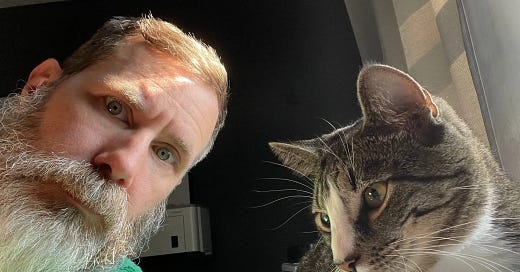Chapter 2: Beliefs
Travis Joseph Rodgers
In chapter 1, we examined arguments. There, I noted that arguments were tools philosophers could use to approach wisdom. They would do that by employing argumentation: creating, evaluating, and tweaking arguments to see what arguments could survive scrutiny and which couldn’t. Each argument would put forward a conclusion (what the author is trying to prove) and do so on the basis of evidence (premises). One of the key aspects of wisdom, on the view I’m advancing, extends to our beliefs. At the end of an argument, we’ll have a conclusion. The conclusions supported by good arguments are good candidates for what we should believe. In other words, we should aim to have beliefs that can be supported by good evidence and we should try to shed those beliefs that are not supported by good evidence, especially if better-supported alternatives exist. Our next question, then, is: “What is a belief?”
One Model of Beliefs
One model of belief is the functional account. On this view, what makes a belief a belief is the functional role that it plays. In particular, it is the role of a belief, along with a desire, to produce actions. When we explain behavior, like why so-and-so won the election, we often appeal to the beliefs of those who voted. They believed, for instance, that X in office was better for the environment.
Beliefs do not tell the whole story of action production. This picture needs at least one more piece: desires. If the voters desire a better environmental situation and believe that X is better for the environment, then, ceteris paribus (Latin for “with other things being equal”), the voters will behave in certain ways. They will vote for X.
A Second Model of Beliefs
On a second model, beliefs are propositional attitudes. This means they are complexes, consisting of two components. First, there is the proposition. A proposition is what a claim is about. In lesson 1, I noted that claims were declarative sentences. If a declarative sentence is “The cat is on the mat,” this sentence is about cats, mats, and their relation to one another. In fact, “The cat is on the mat” is true just in case the cat is actually on the mat. While claims are linguistic, propositions are ways the world could or couldn’t be.
Here are some propositions: The earth is older than five years old; Candidate Smith is great for the environment; Capital punishment is unjust; two plus two equals four.
The propositional component is one aspect of a belief on this model. The other aspect is the attitude one takes toward the proposition.
Some attitudes that could attach to propositions include wanting, fearing, and believing. Wanting means, roughly, that we desire that the proposition is true. Fearing means, roughly, that we do not want the proposition to be true. Believing, on this model, means that we take it that the proposition accurately states a way the world is.
Note that I can both believe a proposition and fear it. I might believe that there’s a bear running toward me in the words. I can certainly fear that that is happening.
Beliefs as True (or False)
As Peter van Inwagen puts it, beliefs “model the world.” So, one way for a belief to be better than another is to model the world more accurately. According to one widely held account of truth, to be true is to represent the world accurately, while falsehoods are inaccurate representations. So, if an economist has a true belief that the economy will face a downturn, that opinion is worth taking seriously, even if you prefer the economy to do well.
Beliefs Require Evidence*
While “how the world is” makes beliefs true or false, if we’re trying to figure out whether a belief is true or false, we must consult the evidence. Across various fields, there are two widely accepted methods of providing sufficient evidence. In successful deductive proofs, the evidence presented guarantees the conclusion’s truth. Deduction is an appropriate standard for many endeavors, including some math, theoretical physics, and some philosophy. On the other hand, much of empirical science, science beholden to sensory observation, is held to a different standard: induction. In successful inductive proofs, the evidence makes the conclusion likely (though not guaranteed) to be true.
Beliefs and Opinions
Sometimes people use the word “opinion” for a belief that they don’t want to defend or think they have insufficient evidence or something like that. I think it’s worth considering opinions to be beliefs. Consider: When physicians and economists offer their expert opinions (beliefs), they offer evidence and try to prove their positions. This is when we should expect people to be willing to defend their opinions. The mere presence of uncertainty or a lack of consensus on a question does not show a lack of evidence. If uncertainty is no barrier to proof by physicians and economists, perhaps the same goes for ethicists. If your goal is to know the world better, then your task should be to determine whether your opinion is a preference or a belief, to understand which are the correct standards of proof for your belief, to sift through the evidence, and to be willing to revise your belief in light of new evidence.



